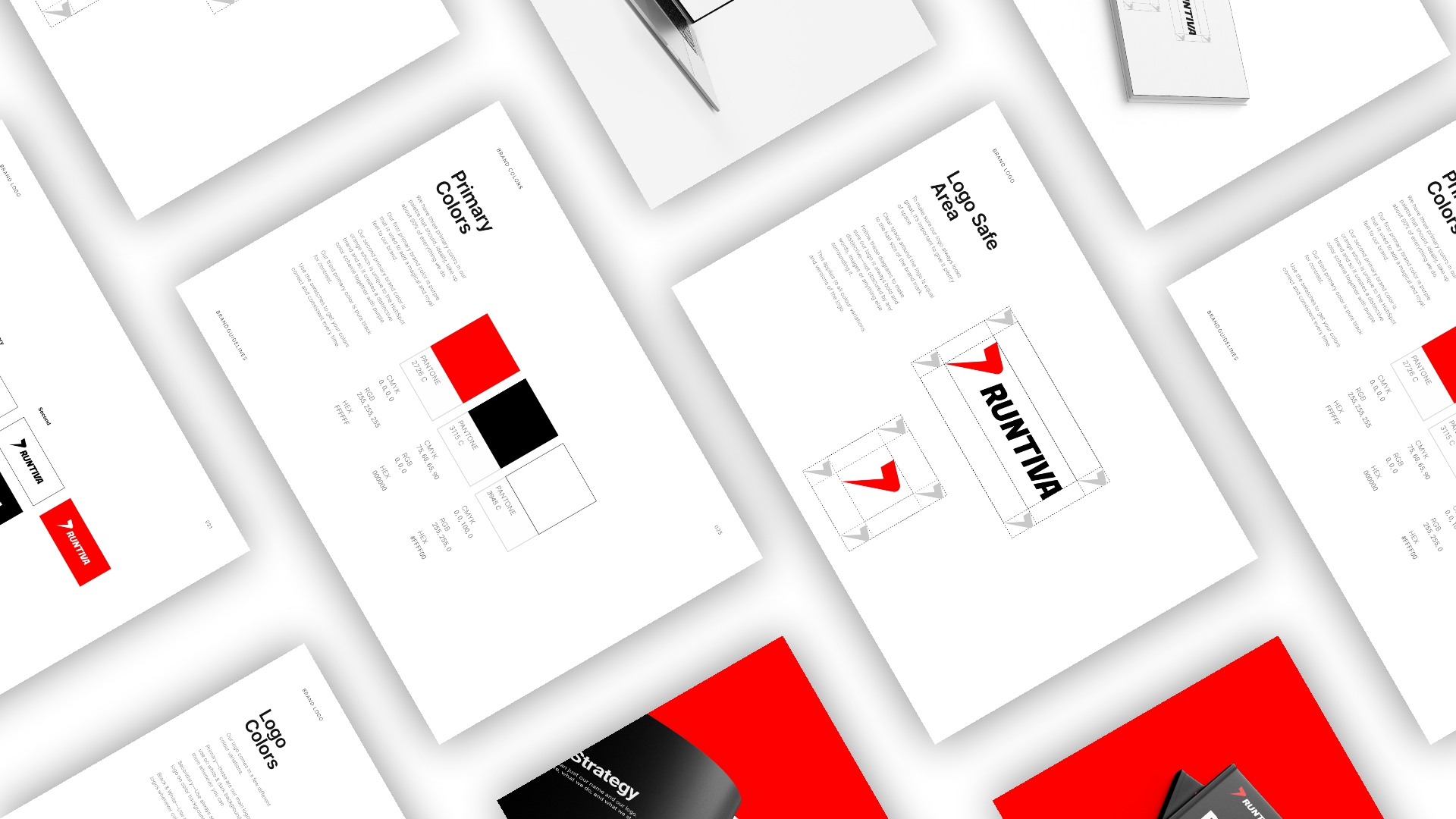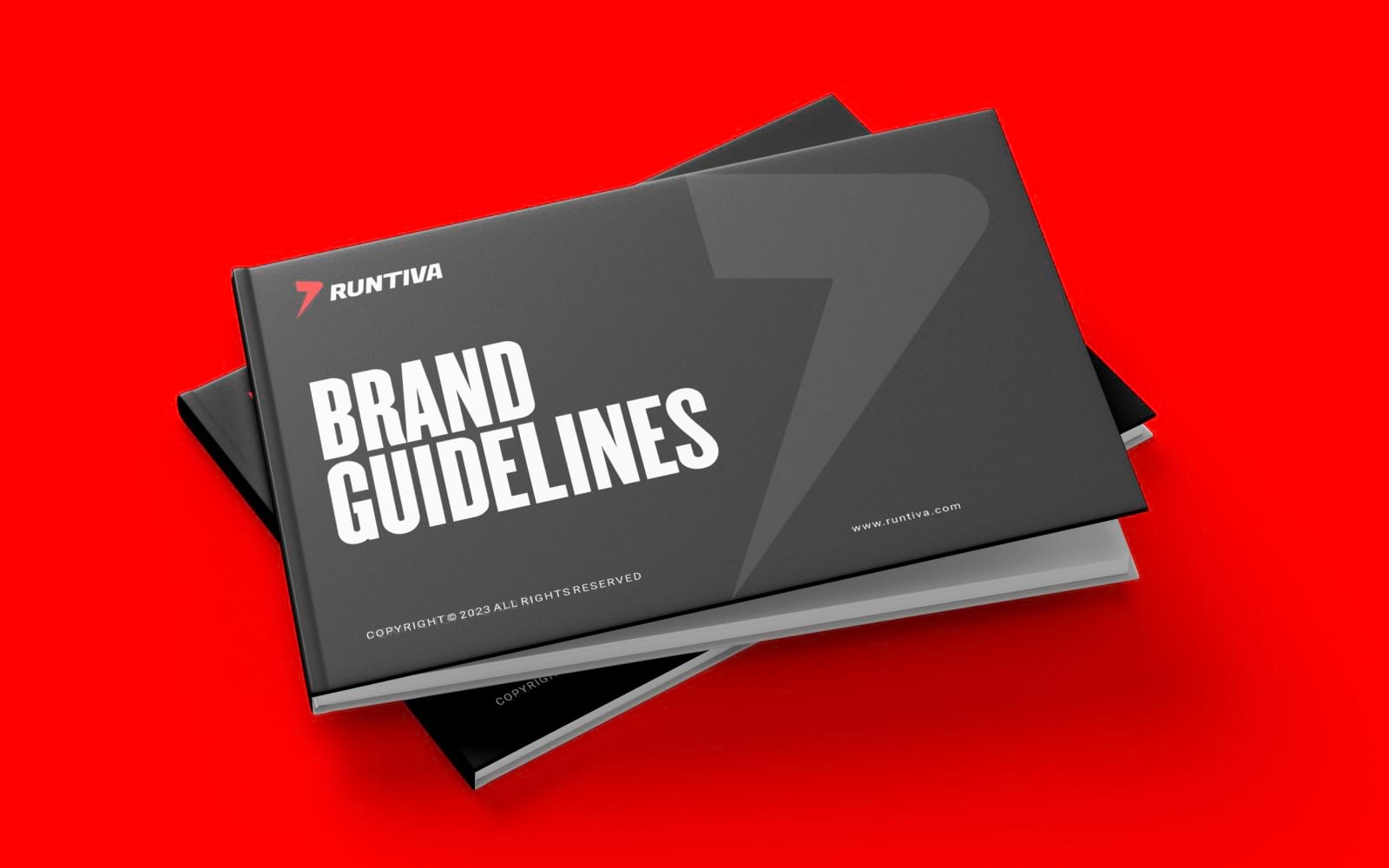Branding
How Brand Guidelines Drive Business Growth and Customer Loyalty
09.02.2025
By shaikh asif

Branding
09.02.2025
By shaikh asif
Brand guidelines are the cornerstone of a cohesive and recognizable brand identity. They ensure that every piece of communication, from a business card to a billboard, adheres to a set of predefined standards that reflect the brand's essence.
This article aims to educate startups, entrepreneurs, CEOs, and business leaders on the importance of brand guidelines in maintaining brand consistency. We will also highlight Alitestar's expertise in delivering premium logo design, brand identity, and branding services.
Brand guidelines, also known as a brand style guide, or brand-book are a set of rules that explain how a brand should be presented across various media. These guidelines include instructions on logo usage, color palettes, typography, imagery, and tone of voice. By following these rules, businesses can ensure that their brand is consistently represented, regardless of where or how it is used.
A Brand Book, is a comprehensive document that outlines the essential elements of a brand’s identity. It’s a detailed guide created to provide consistency across all forms of communication and representation of the brand.

Ensuring Consistency
Consistency is key to building a strong brand. Brand guidelines help ensure that every interaction with the brand, whether through digital media, print materials, or physical products, is consistent and aligned with the brand's identity. This uniformity helps build brand recognition and trust among consumers.
Guiding Brand Expression
It provides clear guidelines on how the brand expresses itself, including its voice, tone, and visual elements. This helps in crafting messages that resonate with the target audience while staying true to the brand’s essence.
Facilitating Onboarding
For new employees, partners, or vendors, the Brand Book acts as an educational tool, bringing them up to speed with the brand’s values, vision, and style, enabling them to represent the brand accurately.
Protecting Brand Integrity
By outlining do’s and don’ts, the Brand Book protects the brand from misuse or misrepresentation, which could dilute its strength or damage its reputation.
Empowering Creativity
While it sets certain boundaries, a Brand Book also encourages creativity within those parameters, allowing for innovative approaches to brand representation that still maintain a cohesive identity.
Streamlining Decision Making
With a Brand Book, decisions regarding branding and marketing become more straightforward, as it serves as a reference point for evaluating whether ideas are on-brand.
Building Brand Equity
Consistent and strategic brand representation, guided by the Brand Book, helps in building a strong brand equity, making the brand more recognizable and valuable over time.
Design Templates
Create templates for common marketing materials and documents based on the Brand Book. This ensures that all communications are consistent with the brand’s design standards.
Internal Communication
Regularly communicate the importance of the Brand Book within the organization. Encourage employees to refer to it when creating presentations, reports, or any branded material.
Brand Audits
Conduct periodic brand audits to assess whether current materials and messaging align with the Brand Book. Update materials as needed to maintain consistency.
Empowerment
Empower your team to make decisions by providing clear guidelines in the Brand Book. When the rules are clear, team members can create new materials confidently, knowing they are on-brand.
Digital Assets Management
Use a digital asset management system to store approved logos, images, and templates. Make it easily accessible to ensure that everyone uses the correct assets.
Codifying Brand Elements
It codifies the brand’s core elements, such as the logo, color palette, typography, and imagery, providing specific guidelines on their use. It ensures that anyone working with the brand can replicate its look and feel accurately.
Communicating Brand Story
The Brand Book communicates the brand’s story, mission, and values, aligning all messaging with the brand’s identity. This narrative consistency strengthens the brand’s voice across different platforms.
Standardizing Marketing Materials
By offering templates and examples for marketing materials, the Brand Book standardizes how the brand is presented, whether in print, online, or in-person, ensuring a uniform brand experience.
Review Processes
Implement a review process where all outward-facing materials are checked against the Brand Book before release. This helps catch any deviations from the brand guidelines.
In essence, a Brand Book is the narrative and the blueprint of a brand, a story that unfolds through every interaction and a plan that guides the brand’s journey towards its goals. It’s a living document that evolves with the brand, ensuring that the brand’s story is told with clarity and impact.
In the rapidly evolving business landscape, brand guidelines are often relegated to the backseat, perceived merely as a collection of aesthetic rules. However, their strategic value extends far beyond design elements. Brand guidelines are pivotal in driving long-term business growth, enhancing brand perception, and improving customer loyalty.
First Impressions Matter: According to a study by Microsoft, the first 10 seconds are crucial in making a positive impression on website visitors. Consistent branding across all touchpoints significantly enhances these first impressions, creating a cohesive and professional image that resonates with consumers.
Building Trust and Credibility: Consistent branding helps build trust and credibility. When customers see the same logo, colors, and messaging repeatedly, it fosters familiarity and trust. This consistency reassures customers that the brand is reliable and committed to delivering on its promises.
Case Study: For example, our recent work with Runtiva showcased the impact of consistent branding. By adhering to comprehensive brand guidelines, Runtiva established a strong brand presence that immediately resonated with their target audience, leading to increased trust and recognition.

Consistency Breeds Loyalty: Consistent branding reinforces a brand’s identity and values, making it easier for customers to form an emotional connection. This emotional bond is a critical driver of customer loyalty.
Reinforcing Brand Values: Brand guidelines ensure that every piece of communication, whether it’s a social media post or an email newsletter, consistently reflects the brand’s values and mission. This alignment helps customers feel more connected to the brand’s purpose.
Research Insight: According to a study by Harvard Business Review, emotionally connected customers are more than twice as valuable as highly satisfied customers. Consistent branding, driven by robust brand guidelines, plays a key role in fostering these emotional connections.
Efficiency in Marketing Campaigns: Clear brand guidelines streamline the marketing process by providing a unified framework for all marketing activities. This reduces the time and effort required to create marketing materials, ensuring that they are always on-brand.
Cost Studivegs: By reducing the need for constant revisions and ensuring consistency from the outset, brand guidelines help businesses save on marketing costs. They also minimize the risk of brand dilution, which can be costly to rectify.
Case Study: For instance, Runtiva’s marketing campaigns became more efficient and effective once they adopted our comprehensive brand guidelines. The consistent application of brand elements across all platforms led to better campaign performance and higher ROI.
Brand Essence
Brand Promise: The commitment the brand makes to its users.
Core Values: The fundamental beliefs that drive the brand’s culture and decision-making.
Mission Statement: A succinct declaration of the brand’s purpose and its commitment to customers.
Vision Statement: The aspirational goals of where the brand sees itself in the future.
Visual Identity
Logo Usage: Specifications for size, spacing, and contexts in which the logo can be used.
Logo Specifications: Exact color codes, sizing, and spacing.
Sub-Marks: Variations of the main logo for different applications.
Color Palette: A selection of colors that represent the brand, including primary and secondary colors with specific color codes (CMYK, RGB, Pantone).
Typography: The typefaces and fonts that reflect the brand’s personality, including guidelines for hierarchy and use in different mediums.
Primary Typefaces: The main fonts used in the brand’s visual communication.
Secondary Typefaces: Additional fonts that support or contrast the primary typefaces.

Personality Voice and Tone:
Brand Personality: The set of human characteristics associated with the brand.
Brand Voice: The personality and emotion infused into the brand’s messaging.
Tone Guidelines: How the brand’s voice changes depending on the situation, audience, and channel.
Imagery and Photography
Style of Imagery: The type of photos, illustrations, and graphics that align with the brand’s visual storytelling.
Brand Application
Collateral Templates: Pre-designed layouts for business cards, letterheads, brochures, and other marketing materials.
Digital Presence: Guidelines for the brand’s representation on websites, social media, and other digital platforms.
Compliance and Enforcement
Usage Do’s and Don’ts: Clear instructions on how to properly represent the brand and common mistakes to avoid.
Legal Guidelines: Information on trademark usage and protecting the brand’s intellectual property.
Steps to Develop Brand Guidelines: Developing brand guidelines involves several steps:
Define the brand’s core elements, such as mission, vision, and values.
Create visual elements, including the logo, color palette, and typography.
Develop guidelines for imagery and tone of voice.
Document these elements in a comprehensive brand guidelines document.
Implementation Strategies: To effectively implement brand guidelines, businesses should:
Ensure all employees and partners are familiar with the guidelines.
Provide training and resources to help teams adhere to the guidelines.
Regularly review and update the guidelines to reflect any changes in the brand.
Ongoing Management: Brand guidelines are not a one-time project. They should be regularly reviewed and updated to ensure they remain relevant. At Alitestar, we offer ongoing support to help our clients maintain brand consistency over time.
Expertise and Experience: With years of experience in branding, Alitestar is well-equipped to create comprehensive brand guidelines that ensure consistency and build strong brand identities.
Case Studies and Testimonials: Our successful projects, such as the Runtiva branding, demonstrate our ability to deliver high-quality branding services. Our clients consistently praise our attention to detail and commitment to excellence.
Premium Quality Services: At Alitestar, we offer premium logo design, brand identity, and branding services. Our team of experts works closely with clients to create unique and memorable brand identities that stand out in the market.
In today's competitive business landscape, establishing and maintaining a consistent brand identity is crucial for long-term success. Brand guidelines are not just a set of rules but a strategic asset that drives business growth and enhances customer loyalty. By ensuring consistency across all touchpoints, brand guidelines build trust, reinforce brand values, and create a cohesive customer experience.
Investing in comprehensive brand guidelines can significantly impact your brand's perception, streamline your marketing efforts, and foster a loyal customer base. At Alitestar, we specialize in crafting premium brand guidelines that align with your business goals and resonate with your target audience.
Ready to take your brand to the next level? Contact Alitestar today to learn how our expert team can help you develop robust brand guidelines that ensure consistency and drive growth. Let’s build a brand that stands the test of time.


Shaikh Asif is an Award-winning designer, director, strategist, and educator. He’s the Lead Strategic Brand Designer and Art Director of The Alitestar— a strategic branding and design agency that helps startups, ambitious CEOs, and passionate entrepreneurs to achieve success and ultimately create unforgettable brand experiences.